Introduction
Do Robins Eat Bird Seed: Robins are omnivorous birds, meaning they have a varied diet that includes both animal and plant matter. They are opportunistic feeders, and their food choices depend on the season and availability of resources. While they do not typically feed on bird seed from feeders, robins play an essential role in maintaining the ecological balance of our gardens. In the spring and summer, robins primarily consume insects, earthworms, and other invertebrates found in the soil. Their foraging behavior involves hopping along the ground, listening for the movement of potential prey, and then swiftly grabbing it with their beaks. This insect-rich diet provides the necessary protein and nutrients for robins during the breeding season when they are raising their young.
As autumn approaches, and insects become scarcer, robins may shift their diet to include fruits such as berries, which are abundant in many gardens. Berries are an essential energy source for robins as they prepare for migration or endure the cold winter months. However, this doesn’t mean they will visit bird feeders stocked with seeds; they prefer ripe fruit and insects when available.
While robins do not typically eat bird seed, their diet is diverse and adapts to the changing seasons. Understanding their feeding habits can help us provide suitable resources for these delightful birds, whether it be planting berry-producing shrubs or creating a habitat rich in insects. Observing robins and their dietary preferences can enhance our appreciation of the natural world and the interconnectedness of all living creatures in our backyards.
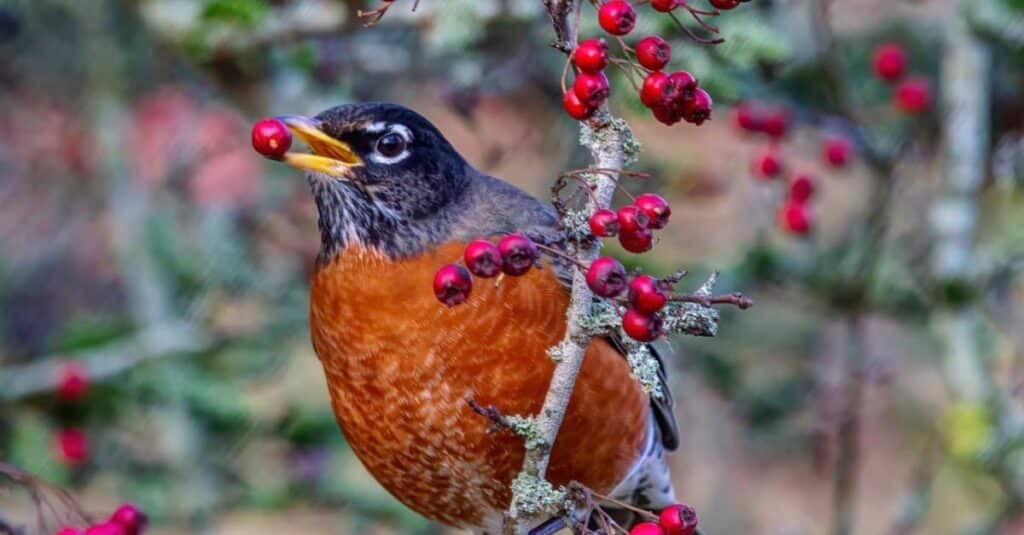
What are robins favorite fruit?
A Robin’s Favorite Winter Foods
Winter robins eat berries, other fruits, and seeds they find on shrubs, trees, and vines. If robins happen to overwinter near you, you can offer them frozen or fresh fruit. They’ll go for apple slices, raisins, blueberries, strawberries, raspberries, and cherries.
Wild Berries
One of the top choices for robins when it comes to fruit is wild berries. They have a particular fondness for fruits like strawberries, raspberries, blackberries, and blueberries. These small, juicy fruits are a valuable food source for robins, especially during the summer months when they are in abundance. Robins are known to visit berry bushes and trees to feast on these delectable treats.
Cherries
Cherries are another favorite fruit of robins. These birds are skilled at plucking cherries from trees and can often be seen perched amidst the branches, enjoying the sweet and juicy flesh. Cherries provide essential nutrients and hydration to robins, making them a sought-after food source.
Apples
Apples are a common fruit in many gardens and orchards, making them easily accessible to robins. While they may not be the top choice, robins will happily feed on apples when other fruit options are scarce. These birds typically peck at the flesh of apples, consuming both the pulp and seeds.
Why are robins so friendly?
There are a few reasons which may explain why robins appear friendlier than other birds. When robins live in the wild in woods or forests they are known to follow large mammals, such as wild boar or deer, using their inbuilt curiosity to find new ways to find food.
Diurnal Nature
One of the key factors contributing to the friendliness of robins is their diurnal nature. These birds are active during the day, which means they are more likely to be spotted by humans who are also active during daylight hours. Unlike many other bird species that are primarily active at dawn or dusk, robins are out and about when people are most likely to encounter them. This increased visibility fosters a sense of familiarity and comfort around humans.
Urban Adaptation
Robins are highly adaptable birds that have successfully carved out a niche in both urban and suburban environments. They have learned to coexist with human populations, often nesting in gardens, parks, and even on building ledges. This proximity to human habitation has led them to become accustomed to human activities, such as gardening and lawn maintenance, further enhancing their approachability.
Omnivorous Diet
Robins are omnivores, which means their diet includes a wide variety of foods. While they primarily feed on earthworms, insects, and other invertebrates, they also have a fondness for fruits and berries. This diverse diet allows them to thrive in different environments and take advantage of various food sources, including those provided by humans in the form of bird feeders or fruit-bearing trees.
What do robins eat their babies?
Great Things About Fecal Sacs
For the first couple of days after hatching, parent robins actually eat many of their babies’ fecal sacs. This sounds gross! But before the babies are a few days old, their intestines don’t have much bacteria to help them digest their food.
Insect-Rich Diet
Baby robins, like their adult counterparts, are primarily insectivores. In the first few days after hatching, their diet consists almost entirely of insects, spiders, and other small invertebrates. Parent robins diligently search for these protein-rich morsels to meet the insatiable appetite of their nestlings.
Softened Insects
To make the insects more manageable for their young, adult robins soften them before feeding. They do this by partially digesting the prey in their own stomachs, breaking down the exoskeletons and making the food more digestible for their chicks. This regurgitated mixture of pre-digested insects and stomach fluids is then fed directly to the hungry baby robins.
High-Frequency Feedings
Robins are known for their frequent and tireless feeding efforts. In the early stages of their chicks’ lives, parent robins may visit the nest every 15-30 minutes, providing small but nutritious meals. This high frequency of feedings ensures that the rapidly growing chicks receive a steady supply of food.
Are robins lucky birds?
For centuries, this tiny bird has been the symbol of good luck, happiness, rebirth – and sometimes even as a messenger for lost, loved ones. There are tales stretching back to Norse mythology where the robin is the protector from storms and lightning. And in Celtic folklore the robin is known as the Oak King of Summer.
Cultural Symbolism
Throughout history, robins have been associated with various symbolic meanings in different cultures. In European folklore, robins were often seen as messengers of hope and renewal. Their appearance in the spring was seen as a sign of the changing seasons and the end of harsh winters, symbolizing new beginnings and the arrival of better times.
Beliefs About Death and Rebirth
In some cultures, robins are believed to be connected to the cycle of life, death, and rebirth. Seeing a robin after the passing of a loved one is considered a comforting sign, suggesting that the soul of the departed is at peace or undergoing a transformation. This belief has led to the idea that robins are messengers from the spirit world, bringing comfort and solace to those who have experienced loss.
Christmas and Robin Redbreast
The robin’s association with Christmas in many parts of the world adds to its reputation as a symbol of good luck and joy. In British folklore, the robin redbreast is said to have acquired its distinctive red plumage by singing over the dying embers of a fire to keep it alive during a cold winter night. Because of this, robins are often featured on Christmas cards and decorations, symbolizing warmth, protection, and goodwill.
Why are Robin eggs blue?
Why are robins’ eggs blue? American robins’ eggs are blue due to a pigment called biliverdin, which is deposited on the eggshell when the eggs are laid. Biliverdin is a green bile pigment and is the same pigment that causes some bruises to initially look bluey-green.
Pigment-Free Shell
Unlike the brown or white eggs of many other bird species, robin eggs are blue due to a lack of pigment in the eggshell. The outer layer of a robin’s egg is essentially colorless. Instead, the blue coloration comes from the inner layer, which contains a unique combination of structural features and organic compounds.
Structural Coloration
The striking blue hue of robin eggs is primarily a result of structural coloration rather than pigments. The eggshell’s color is created by the way it interacts with light. The eggshell’s microscopic structure scatters light in a way that amplifies blue wavelengths, making the eggs appear blue to our eyes.
Biliverdin Pigment
While robin eggs are predominantly colorless due to their structural features, they do contain a pigment called biliverdin. Biliverdin is a green pigment that is a byproduct of the breakdown of hemoglobin, a molecule found in red blood cells. During eggshell formation, small amounts of biliverdin are deposited in the outer layer of the eggshell. The combination of the blue structural coloration and the presence of biliverdin gives robin eggs their unique greenish-blue or turquoise hue.
Adaptive Advantage
The blue coloration of robin eggs is not just a visual delight; it serves evolutionary purposes. One key advantage of having blue eggs is that it can help deter predators. The bright blue color is highly conspicuous in the nest, making it easier for parent robins to recognize their own eggs and spot the presence of foreign eggs or intruders.
What happens if one robin dies?
If it was the male who died, the female might continue to incubate, but may just give the nest up for lost because the chances of bringing off more than one or two nestlings is very slight with just her to feed them.
Initial Responses
When a robin dies within its community, the initial response among the other robins can vary. In some cases, nearby robins may exhibit behaviors that indicate distress or concern. They may become more vocal, engage in increased vigilance, or approach the deceased robin to investigate. This initial reaction is not unusual, as robins are known to be observant and sensitive to changes in their environment.
Removal of the Deceased
In many cases, the remaining robins will eventually remove the body of the deceased bird from the area. This removal serves several purposes. Firstly, it helps prevent the potential spread of diseases that may have caused the death. Secondly, it helps maintain the cleanliness of the nest or territory. Robins are known to be relatively neat birds, and they may be motivated to remove a deceased member to ensure the area remains suitable for nesting and raising young.
Mournful Songs
Some observations suggest that robins may engage in mournful songs or calls when a member of their community dies. These songs can be seen as a form of communication among robins, potentially signaling their acknowledgment of the loss. However, the interpretation of such behaviors can be subjective, as it is challenging to definitively determine whether robins are expressing grief or simply responding to the changed
Which bird in India has sky blue eggs?
Indian mynas lay two to five blue/turquoise eggs. They can breed twice a year and will build and defend several nests at a time (although only one will hold eggs). The egg colour is distinctive as no native ‘hollow-nesting’ birds lay blue/ turquoise eggs.
Sky-Blue Eggs
What truly sets the Indian Roller apart is its stunning sky-blue eggs. These eggs are a sight to behold, and their coloration is often described as resembling the clear blue sky on a sunny day. The eggs are typically spherical or slightly elongated and are known for their smooth texture and delicate appearance.
Nesting Habits
Indian Rollers are cavity-nesting birds, meaning they seek sheltered locations to build their nests. They often choose tree hollows, crevices in cliffs, or even man-made structures like buildings or telephone poles. The female roller lays a clutch of eggs, usually consisting of three to five eggs, which she incubates for around 17 to 19 days. During this period, the male roller provides food for the female.
Significance of Blue Eggs
The sky-blue color of Indian Roller eggs serves multiple purposes. Firstly, it provides excellent camouflage, blending in with the blue sky above and making them less conspicuous to potential predators. Secondly, the coloration may be an indication of the female’s reproductive health and quality as a potential mate.
Will crows eat robin eggs?
The main predators of robin eggs are blue jays, crows, snakes, squirrels. Deer eat a lot of bird eggs and nestlings, too, but only from ground nests.
Robin Nest Vulnerability
Robins, like many bird species, build nests to incubate and protect their eggs. These nests are typically located in trees or shrubs and are well-hidden from predators. However, their vulnerability lies in the fact that they are not entirely impervious to discovery.
Nest Predation
Crows are among the bird species known to engage in nest predation, which involves seeking out and raiding the nests of other birds to consume eggs or nestlings. While crows have been observed raiding nests, Note that they do not specifically target robin eggs. Instead, they opportunistically exploit available food sources, which may include robin eggs if they come across them.
Impact on Robin Populations
The impact of crows on robin populations can vary depending on several factors. Crows are not the only predators that robins face; other potential threats include squirrels, snakes, and other birds. The availability of alternative food sources also plays a significant role in determining whether crows target robin eggs. In areas with abundant food sources, crows may be less likely to raid nests.
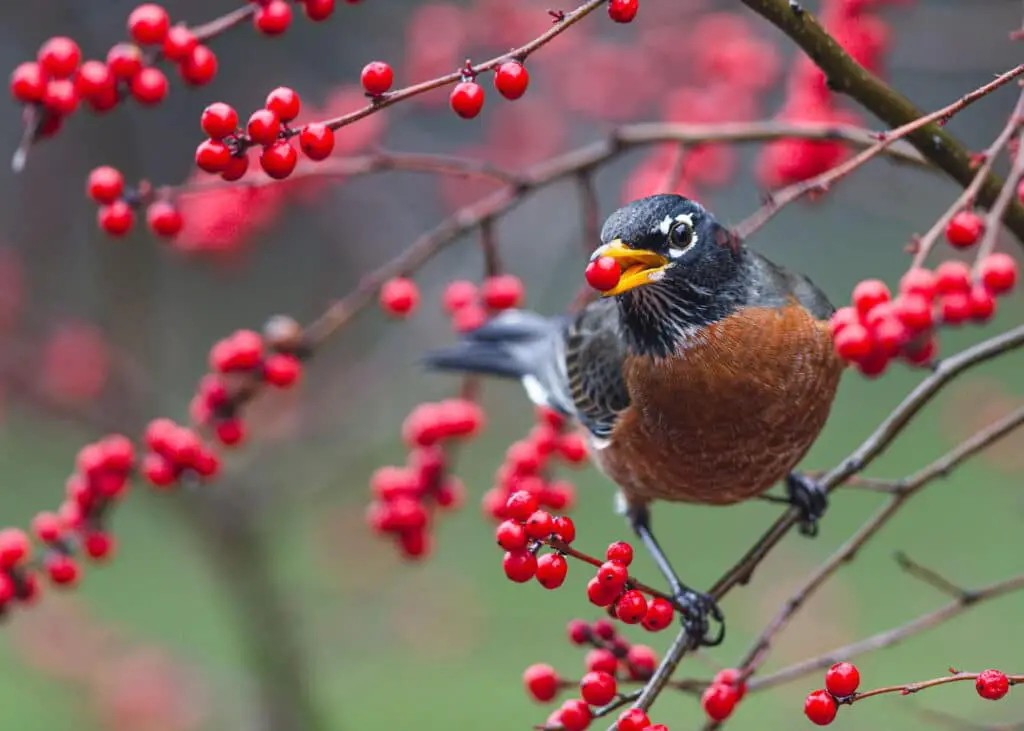
Conclusion
Throughout the spring and summer, robins take on the role of insectivores, diligently searching for earthworms, insects, and other invertebrates in the soil. Their adept hopping and sharp beaks enable them to secure the protein-rich diet they need, especially during the demanding period of raising their offspring. As autumn arrives and insect populations dwindle, robins shift their focus to fruits, particularly berries, which provide them with essential energy stores for migration or winter survival.
While the seeds found in typical bird feeders might not be their preferred choice, robins still make valuable contributions to our gardens and ecosystems. By nurturing a diverse range of plants, including berry-producing shrubs and trees, we can create a welcoming environment that supports these feathered friends year-round. Their interactions with the natural world serve as a reminder of the intricate web of life and the role each species plays in maintaining ecological balance.
Robins are a symbol of resilience and adaptability, embodying the spirit of change that characterizes the seasons. Their presence enriches our lives, offering the opportunity to witness the wonders of nature in our own backyards. So, while they may not frequent bird feeders stocked with seeds, robins remain an integral part of our ecosystem, enhancing our appreciation for the intricate tapestry of life that surrounds us. As we continue to observe and learn from these remarkable birds, we gain a deeper connection to the natural world and a renewed commitment to preserving and protecting the habitats they depend on.

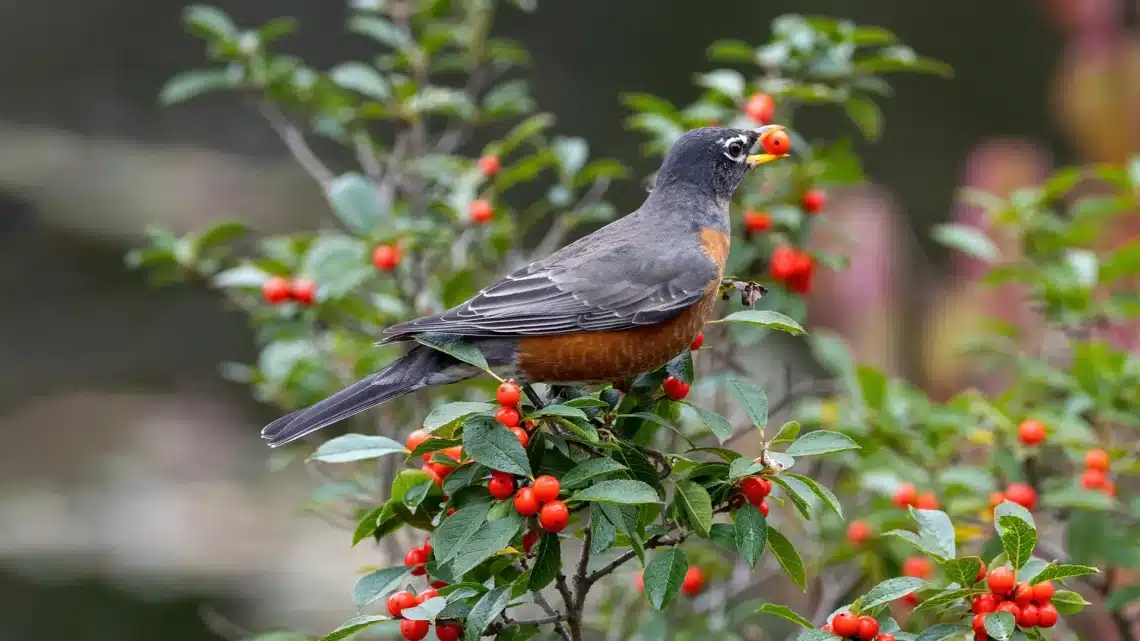
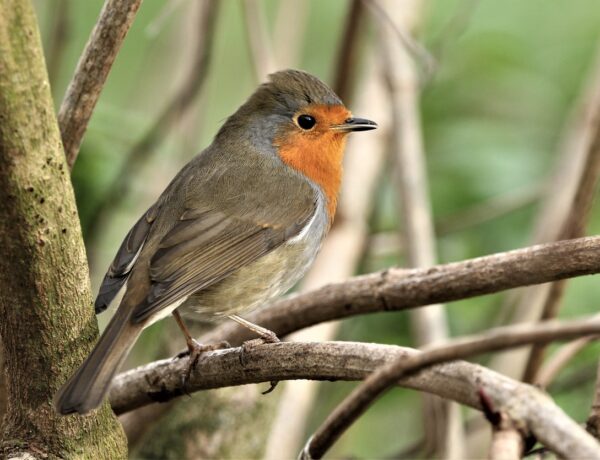
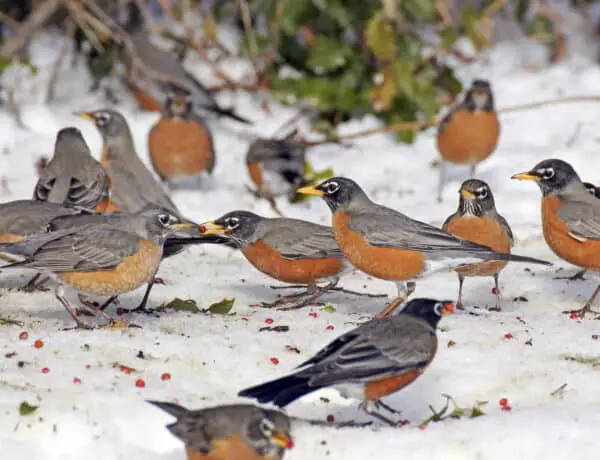
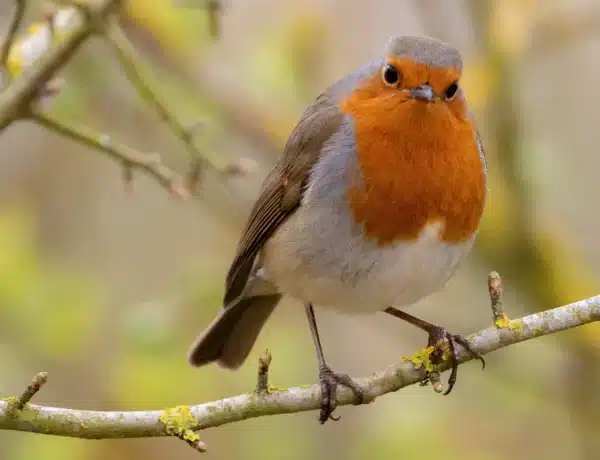
No Comments